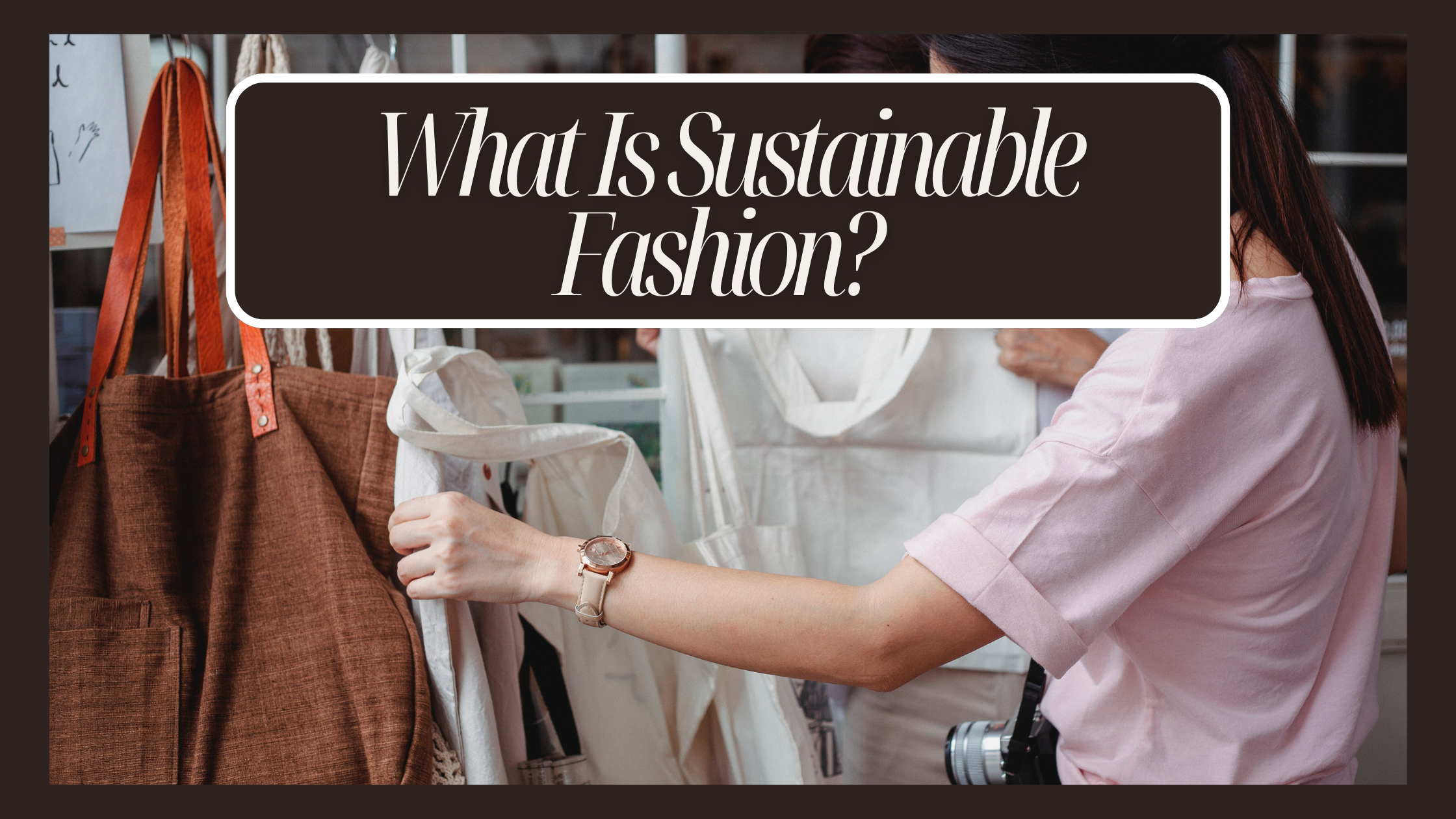No products in the cart.

Sustainable fashion may be a buzz phrase you’ve heard for some time now. Many people have turned in their fast-fashion consumption in exchange for more sustainable purchases. What impacts does fashion have on the environment and how can one practice more sustainable fashion choices? Here’s an overview.
They Understand the Environmental Impact of Fast Fashion
“One day you’re in, the next day you’re out.” This general attitude toward trends and what’s popular is so commonplace in our culture that a reality fashion television program uses this phrase as its catchphrase.
The problem is that a lot of the clothes and accessories that become “out” wind up in our landfills and send microplastics into our waterways. Moreover, the constant production of clothing that is only “in” for a season contributes to rising carbon emissions, leading to further climate change.
Overconsumption
Around 20 percent of all fashion produced is never worn in the U.S. That number jumps to around 50% in the UK. Let those numbers sink in. In the US, amounts to 1 in 5 garments produced that are never worn, and in the UK, that’s 1 out of every two fashion items. Think about your own closet. There may be things in there that have never been worn – and that may even have tags still on them.
While a lot of people donate their clothing to charities to keep it out of landfills, some charities receive so many clothing donations that the items still wind up in the trash. Columbia Climate School noted that in Minnesota at one Goodwill, as many of 12 grocery carts worth of clothing wound up in the trash due to an overabundance of items.
Microplastics
Every time you wash laundry that has synthetic materials, microplastics are released into the water. Microscopic bits of plastic break off from fibers and get washed out with the discarded water. This is a major problem that I will talk about more in a future article, but for now, know that it causes significant health risks for every form of life on earth. Microplastics not only proliferate in our oceans but in our own bodies.
This is a problem we can’t escape by simply upcycling clothing, unfortunately. While upcycling and recycling fashion is a great way to be more sustainable in our fashion practices, there are some suggestions that this backfires when it comes to synthetic fabric recycling.
Carbon Emissions and Water Waste
Clothing production is responsible for around 10% of greenhouse gas emissions and 20% of wastewater globally. The production of a single t-shirt uses around 2700 liters of water in its production. It takes water for the cotton to grow. Then, the cotton needs to be washed. If dyes are used, that produces even more wastewater. With so many people in the world lacking access to clean water, this is hugely problematic.
How to Support Sustainable Fashion
While things seem dire when it comes to feeding our need for creative expression through fashion, there are things we can do to reduce the impact of fashion on the earth and our ecosystems.
Purchase Items Secondhand
First, we can purchase fashion items secondhand, reducing the amount of new fashion items consumed. When purchasing items secondhand, it’s important to look for garments made from natural materials to avoid the microplastic problem synthetic items have.
Support Transparent Production Methods
Second, more companies are committing to being more transparent in their production methods. This is great news for those wishing to make more sustainable purchases. When considering a fashion brand to purchase from, inquire about their practices. These can vary from using recycled materials, using natural materials in sustainable ways, and even offsetting carbon emissions.
Support Producers with Sustainable Fashion Certificates
Finally, there are a few sustainability certificates that bolster claims companies have about their practices. One is the Global Organic Textile Standard (GOTS), which certifies organic cotton. Another is the Global Recycled Standard (GRS) which certifies any claims someone makes about whether their product is recycled. LEED certification is another one to look for when making fashion purchasing decisions.
Final Thoughts on the Push for Sustainability in Fashion
There’s no such thing as zero-impact fashion. This is important to keep in mind the next time we find ourselves in a fitting room. The choices we make do impact our environment and the world around us – from overconsumption risks to microplastics in our waterways to fair labor practices. Paying attention to sustainable fashion is necessary for the industry to reduce its negative impacts.
By being informed about the realities of the fashion industry, we can make decisions that help to reduce negative impacts. Fashion is a great way to express one’s self. By continuing to push for sustainable practices in the industry, it doesn’t have to continue to have large negative impacts on the Earth.
